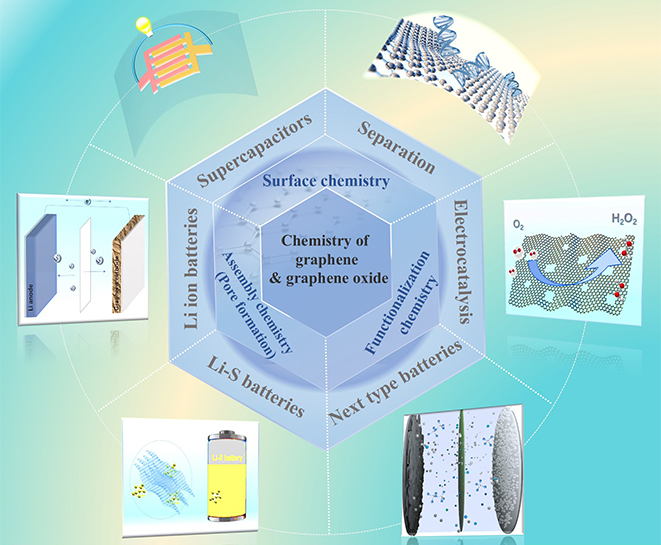H.B. Huang, H.D. Shi, P. Das, J. Q. Qin, Y.G. Li, X. Wang, F. Su, P.C. Wen, S.Y. Li, P.F. Lu, F.Y. Liu, Y.J. Li, Y. Zhang, Y. Wang, Z.-S. Wu*, and H.-M. Cheng*
Advanced Functional Materials, 2020, 30, 1909035.
DOI: 10.1002/adfm.201909035 [PDF]

Graphene and graphene oxide (GO), as wonder-materials, have penetrated nearly every field of research. However, this quick ascent to success has diverted attention away from their chemistry that makes them so “wonderful”. One of the most attractive features is the functionality and assembly of graphene or GO, in which they can be considered as chemically functionalized building blocks for the creation of unconventional porous graphene materials (PGMs) with diversified compositions and micro-, meso- and macro-pores. These PGMs not only combine the merits of both porous materials and graphene, but also have several major advantages over other porous carbon materials when targeted for specific applications. In this review, we first introduce the chemistry and approaches for functionalizing graphene and GO, and subsequently summarize the typical procedures for pore-creation (e.g., in-plane pores, 2D laminar pores, and 3D interconnected pore assemblies), self-assembly and tailoring mechanisms for PGMs to highlight the significance of precise control over the pore morphology, and pore size. Their structure-property relationships are also discussed. Because of the unique pore structures with different morphologies and intriguing properties, PGMs serve as key components in a variety of applications such as energy storage (supercapacitors, metal ion batteries, and new-type batteries), electrocatalysis, and molecular separation (water desalination, and gas separation). Finally, we identify the challenges relating to porous graphene from the understanding of chemical self-assembly to specific applications, and provide promising solutions on how to tackle them. This review provides an insightful outlook for the future development of the chemistry and applications of PGMs.